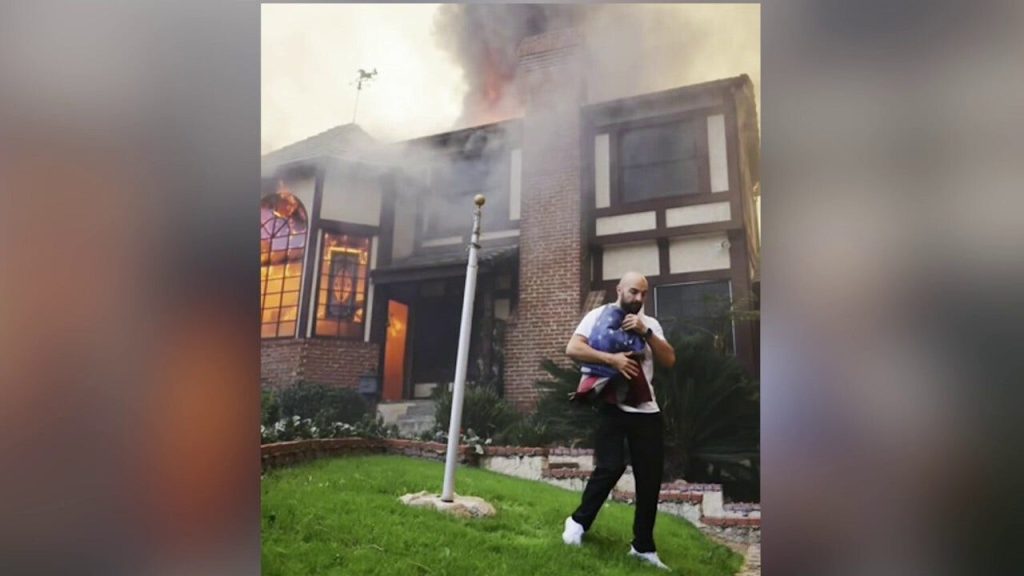Sultan Ramazanov, a Russian asylum seeker in the United States, etched his name into the annals of heartwarming stories amidst the devastating California wildfires of January 2024. Driving through the fire-ravaged landscape of Altadena with a friend, Ramazanov, a newcomer to the phenomenon of wildfires, was gripped by fear for his adopted city. The raging inferno, a stark contrast to anything he had ever witnessed, instilled a sense of urgency within him to act, to contribute in some way to the preservation of his new home. Observing the iconic American flag, a symbol of the nation that had offered him refuge, engulfed in flames and smoke, Ramazanov felt compelled to rescue it. He implored his friend to stop the car, determined to salvage at least this emblem of resilience.
Despite the intense heat and thick smoke, Ramazanov bravely approached the burning house, his focus unwavering on the tattered flag. With careful precision, he unhooked the charred banner from its pole, the red, white, and blue fabric bearing the scars of the inferno. One red stripe hung precariously, a testament to the destructive power of the fire, but the remaining stars and stripes remained, a symbol of enduring hope. Clutching the rescued flag, its white stars gently folded against his arm, Ramazanov retreated from the scene, the image of his heroic act captured by his friend’s video camera.
Unaware of the impact his actions would have, Ramazanov shared the video on Instagram, hoping to locate the homeowners and return what might be one of their few surviving possessions. The video quickly went viral, garnering millions of views and earning Ramazanov the moniker of a “Jason Statham lookalike” for his resemblance to the action movie star. The widespread attention not only brought him unexpected fame but also served its intended purpose: it facilitated his connection with the flag’s owner, a 74-year-old man grateful for Ramazanov’s courageous act.
The serendipitous recovery of the flag transcended a simple act of preservation; it became a powerful symbol of gratitude, resilience, and the enduring human spirit. For Ramazanov, the flag represented the nation that had granted him asylum, a place where he hoped to build a new life for himself and his family. His act of rescuing the flag reflected his deep appreciation for the United States and its symbolic representation of freedom and opportunity.
The widespread acclaim for Ramazanov’s act underscored the unifying power of simple acts of kindness and courage. In a world often marred by conflict and division, his story resonated with people from various backgrounds, demonstrating the shared human capacity for empathy and the appreciation for symbols of hope. The rescue of the flag became more than just a retrieval of a physical object; it became a symbol of cross-cultural understanding and the shared human experience of seeking refuge and building a new life in a foreign land.
Ramazanov’s story is a testament to the interconnectedness of human lives and the powerful impact of small acts of bravery and compassion. His act of rescuing the American flag, driven by a sense of gratitude for his adopted country, transformed him into an unlikely hero. The viral video, initially intended to reunite the flag with its owner, became a beacon of hope and a reminder of the shared values that bind communities together, especially during times of crisis and adversity. The charred flag, once a casualty of the devastating wildfires, became a symbol of resilience, gratitude, and the enduring strength of the human spirit, bridging cultural divides and reminding us of the common threads that unite us all.

